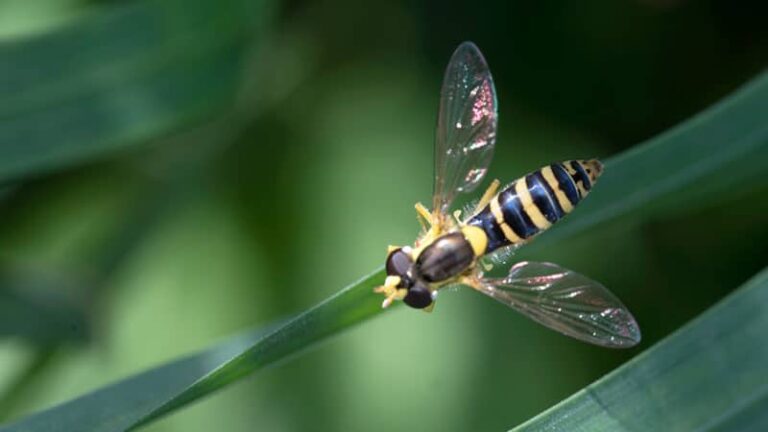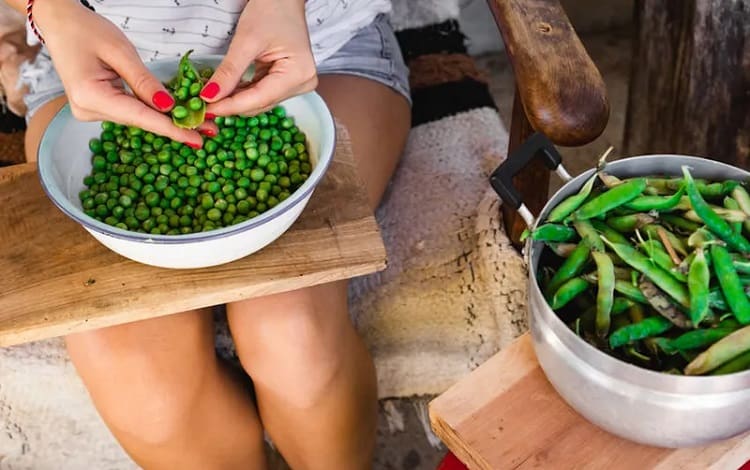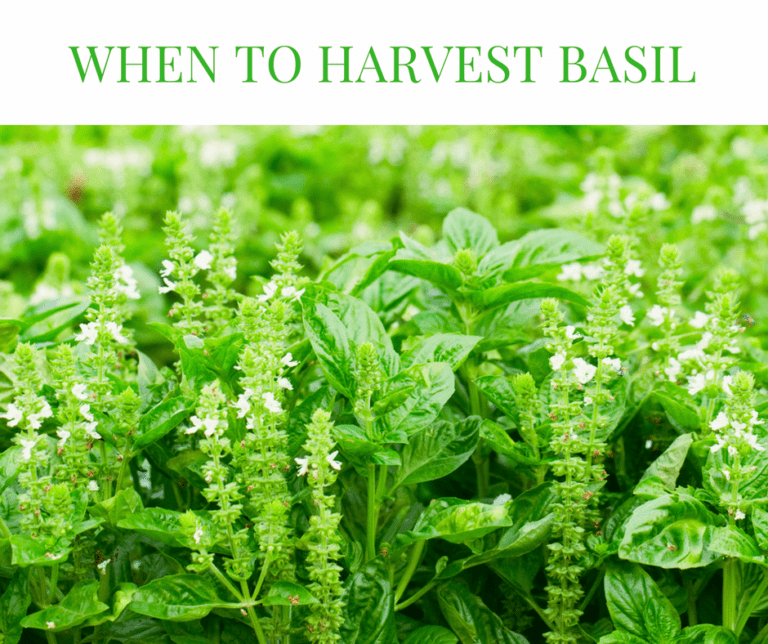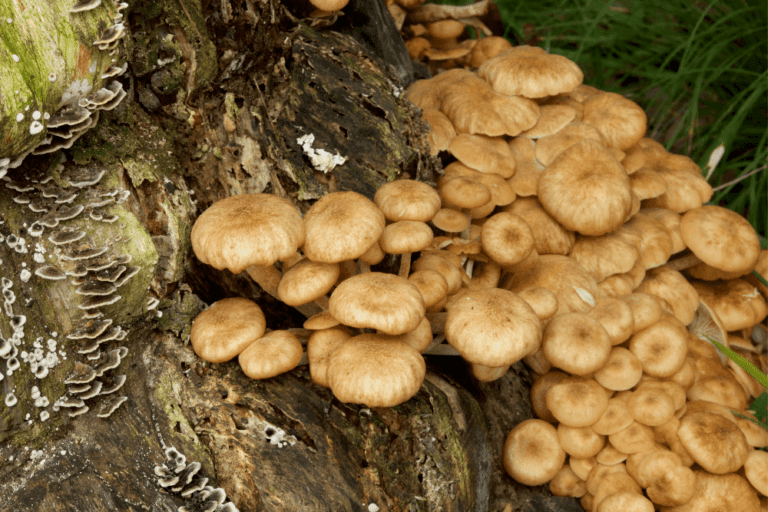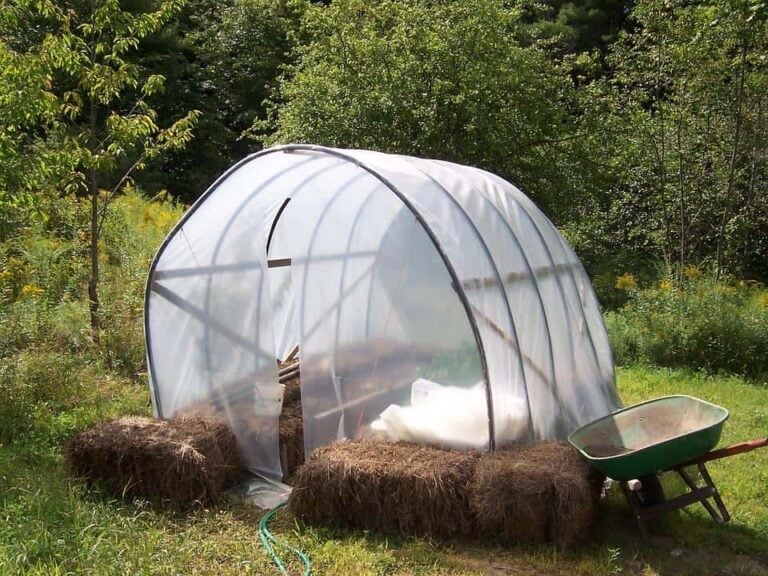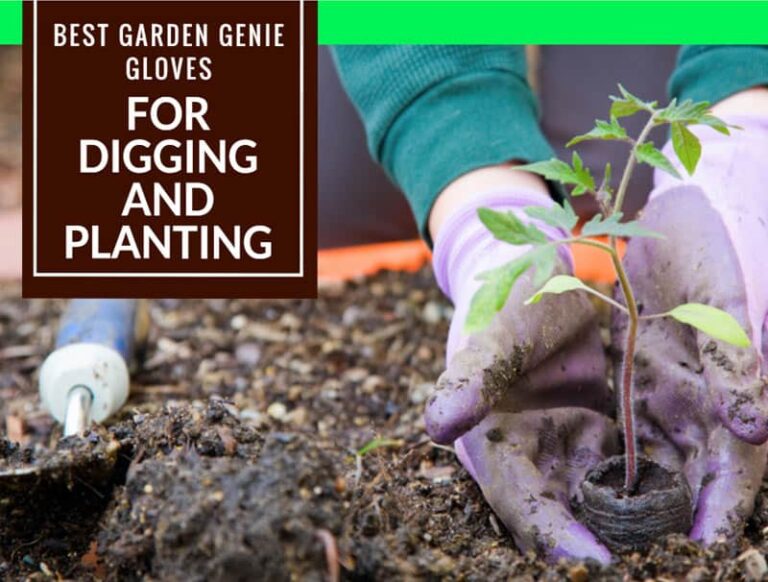How To Grow Potatoes: A Step by Step Tutorial
Just like tomatoes, potatoes are another type of those essential vegetables everyone uses in the kitchen. Potatoes are cheap, nutrient and easy to cook. They can be used for fancy dishes or simply thrown in the oven with a little butter and salt for an equally delicious result.
Potatoes are also easy to grow. They adapt well to many environments and can be grown outdoors in the garden or in pots and indoors in all types of containers.
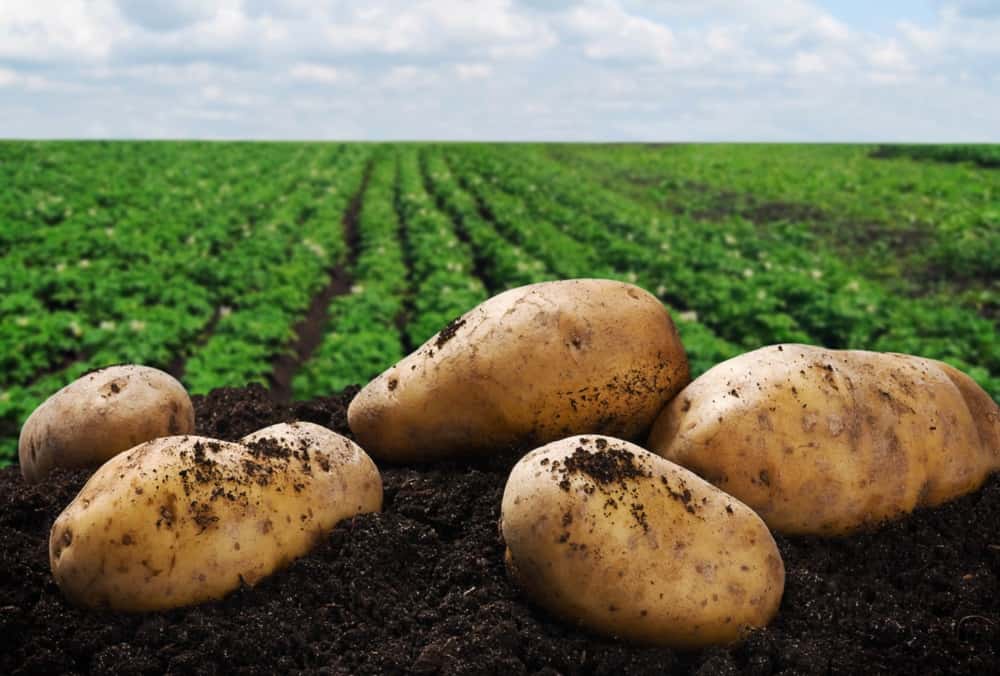
And since the only way to control the use of pesticides or other potentially harmful substances is growing your own vegetables, more and more people are wondering how to grow potatoes. This guide to growing potatoes will teach you all the basics, so stay tuned.
Table of Contents
Potato Varieties And Colors
I confess, before becoming involved in gardening, I divided potatoes into two categories, red and white. Furthermore, I divided potatoes into waxy potatoes and those annoying potatoes that transform into puree when I actually wanted them firm for a salad.
But when I decided to grow my own potatoes I was smashed by the reality: there are over 4000… yeah, that’s not a typo, native potato varieties and an additional 180 species of wild potatoes. And that’s how I understood that it wasn’t the potatoes, but it was me not knowing how to pick them.
It is obvious that the major part of the gardeners will never become familiar with all these potato types, therefore I’m going to make things easier for you. There are seven major potato types. Let’s have an in-depth look at them.
White Potatoes
White potatoes come in many sizes and shapes. The size varies from small to medium and they can be round or elongated. The skin can be either white or tan but the flesh is invariably white.
White potatoes have a creamy yet dense texture with a subtle sweet flavor and a low sugar content. They maintain their shape well after cooking, being ideal to be used in salads or for French fries. The thin skin can be left on the flesh if you want to add more texture to your dishes.
Yellow Potatoes
Yellow potatoes are probably some of the most popular. Their size can vary from small to large and they can be round or elongated. The yellow potato skin can vary in color from tan to golden and the flesh can vary in color from light yellow to bright golden.
Yellow potatoes have a slightly waxy texture and buttery sweet flavor with a medium content of sugar. They can be cooked grilled or roasted, mashed, or boiled.
Red Potatoes
Red potatoes are usually round or slightly elongated, they have a waxy texture, are creamy and smooth and have a sweet flavor and a medium sugar content. Although the skin is red, thus the name, the flesh of the red potatoes is typically white.
Red potatoes are delicious when roasted or used for salads. They maintain the shape very well when cooked, therefore they can also be used for stews or casseroles. The skin is usually thin, therefore it can be left on the flesh for a beautiful contrast.
Purple/Blue Potatoes
Purple/Blue Potatoes have small to medium dimensions, vary in shape from elongated to fingerling and have deep purple, reddish or blue skins. The flesh varies in color from purple to blue to lavender, pink or white.
Purple or blue potatoes distinguish themselves thanks to their nutty flavor and to the low sugar content. The flesh is rather firm and purple or blue potatoes are delicious when baked or roasted. They can also make a beautiful adding to a potato salad if you want a touch of color in your bowl.
Russet Potatoes
Russet potatoes vary between medium and large dimensions, they are either elongated or flatten ovals in shape and their skin is usually brown with a netted pattern. The flesh varies from white to pale yellow and the flavor is mild and earthy.
They have a floury-dry texture and can be cooked either fried or baked, although they are mostly suitable for mashed potatoes.
Petite Potatoes
Many believe that petite potatoes are potatoes harvested early. That is not true at all. In fact, petite potatoes are bite-sized when they are fully ripe. Often referred to as marble potatoes, they can have all the skin and flesh characteristics as the potatoes described above.
The flavor of petite potatoes will resemble the flavor of their bigger cousins, and petite potatoes are ideal for salads or side dishes.
Fingerling potatoes
Fingerling potatoes, as their name says, are finger-shaped. They can reach dimensions of up to 4 inches and come in a wide variety of colors and textures. However, all fingerlings are usually waxy and firm.
The flavor of the fingerling potatoes is buttery and nutty and both their flesh and their skins can vary in color from purple to red or yellow and white. Sometimes, the flesh of the fingerlings can be striped. Because they are visually attractive, they could be a beautiful addition to salads.
In addition to this categorization, we can also divide potatoes based on their texture. In this case, we can speak of three potato categories.
All-Purpose Potatoes: these potatoes have a medium starch content and can be used for almost all dishes. A famous variety of potatoes that fall in this category is the popular Yukon Gold.
Starchy Potatoes: they have fluffy textures and are great for baking, frying or boiling. Starchy potatoes are excellent for mashed potatoes, but will probably not maintain their shape, so try to avoid them if you’re making a salad. Russet potatoes fall in this category
Waxy Potatoes: at the opposite end compared to the starchy potatoes are the waxy ones. They have a firm flesh and a creamy texture, maintaining their shape well when cooked. Red Bliss is one variety of this category and all waxy potatoes are great for salads, casseroles or roasted.
Early, Midseason And Late Potato Varieties
After learning so much about the different potato categories and varieties, you might have got an idea about the variety of potatoes you want to grow. But hold your horses because we also have to divide potatoes based on their time to maturity.
In fact, we can distinguish between three categories: early potatoes, midseason potatoes, and late potatoes varieties. As the common sense suggests, the early varieties mature in less time compared to the other two types, late potatoes need a long growing season while the midseason stand in-between.
Early season potatoes reach their maturity in about 75 to 90 days from planting, therefore they are preferred either by the cultivators who live in the cool regions or by those who want an early crop. Some early varieties are the Norland or the Yukon Gold.
Midseason varieties reach maturity in about 95 to 110 days. Some varieties are Purple Viking, French Fingerling, Ida Rose and Red Pontiac.
Lastly, the late season potatoes reach their maturity in about 120 to 135 days. The potatoes are preferred by those gardeners who want to store the potatoes throughout the winter. Late season varieties include Canella Russet, Purple Peruvian, Fingerling Salad and German Butterball.
How To Grow Potatoes In The Garden
Typically, when one thinks about growing potatoes, growing them in the garden seems to be the number one choice. For this reason, let’s see how to grow potatoes in the garden.

Starting Potatoes Plants From Seeds
Starting to grow potatoes is really easy and, on the contrary of many other vegetables, you will usually be able to start your own plants either from true seeds or for seed potatoes.
If you want to start from true seeds, you should sow them indoors about 4 to 6 weeks before the expected last frost in your area.
You will need:
- Potato seeds
- Seeding trays or pots
- Soilless growing medium
How to do it:
- Sow the seeds in the trays or pots and cover them with 1/16-inch of soilless medium.
- Place the trays in a warm room. The temperature should be about 60 to 70°F.
- Keep the growing medium constantly moist but don’t soak. The seeds will germinate in about 15 days.
- When the seedlings developed four leaves, transplant them into individual pots filled with potting soil.
Alternatively, you can start your tomato plants from seed potatoes. In this case, I strongly suggest buying certified seed potatoes from a nursery. It is true that you can virtually start your potato plants from any type of tuber, but most of the times you will not be able to grow healthy plants from the potatoes bought from the supermarket.
The reason is simple. Many of the potatoes sold in stores are treated with a chemical against sprouting. Therefore, your potatoes will either rot or will produce unhealthy plants.
To grow potatoes from tubers you will need:
- Certified seed potatoes
- A shovel
Here is how to do it:
- In the case of seed potatoes, you will not have to start your plants indoors. As soon as the frost danger completely passed and the soil temperature reaches about 45°F you can seed your plants.
- If you have large seed potatoes, you can cut them into pieces, so you will be able to grow two or four plants from each potato seed.
- One week before the scheduled planting date set the potatoes in a sunny spot, such as a windowsill or on the porch and let them sunbathe. Don’t worry if they begin to sprout, your potato plants will only grow faster.
- Dig 6 inches deep furrows.
- Set the seed potatoes at a distance of at least 12 inches apart.
- Cover the seed potatoes with 2-4 inches of soil.
- If you need to seed the potatoes in rows, leave at least 2 feet apart.
- Water thoroughly and make sure to maintain the soil moist until the sprouts come out of the ground.
If you want to fasten the germination and growing process, you can pre-sprout the seed potatoes indoors. To do this, place your seed potatoes in a warm and well-lit environment. The temperature should be at least 70°F.
Both the warm temperature and the light will stimulate the seed potatoes to sprout and your plants will grow faster.
Planting A Potato
If you decided to grow potatoes from true seeds and sowed them indoors, as soon as the soil’s temperature reaches 45°F it is time to transplant the seedlings in the garden.
You will need:
- Potato seedlings
- A shovel
Here is how to do it:
- When the temperature is warm enough and all the frost dangers passed, move the pots with the seedlings outside and set them in a wind-free area. Keep them outside for 3 days to accustom the seedlings to the transition.
- After three days, follow the planting steps described for planting seed potatoes, with the amendment that you should leave the stem and the leaves of the seedlings above the ground.
- Water thoroughly immediately after transplantation to reduce the shock, then water regularly to maintain the soil moist but not soaked.
Terrain Requirements
Potatoes are easy to grow, but they prefer a loose, well-drained soil. Don’t forget that the edible part of the potato plants is the tubers, which actually grow in the ground. Clay soil makes it difficult for the plants to grow roots and subsequently the tubers.
For this reason, a sandy rich-in-nutrients soil is preferred. To enrich the nutritive qualities of the soil present in your garden you can mix some well-aged compost into it.
To do this you will need:
- Well-aged, high-quality compost
- A shovel
Here is how to do it:
- Sprinkle about 3 or 4 inches of compost on the soil
- Work the compost in the first 6 to 8 inches of soil, paying attention to mixing well.
- If the soil is clay you might even need to increase the compost layer by an inch or two, to loosen it and prevent compaction.
A good compost will not only loose a too clay soil and it will also prevent a too sandy soil drain water too fast, therefore it is recommended regardless of the characteristics of your soil.
Another characteristic your soil should have is a slightly acidic pH. In fact, potatoes thrive in acidic soils with pH between 5.5 and 6.0
Spacing Requirements
Potatoes need space to develop their roots on which the tubers will grow. For this reason, the medium-sized potatoes need to be planted at about 12 inches apart and you should leave about 30 to 36 inches between the rows.
Respecting these spacing conditions, you can expect a yield between three and five pounds of potatoes per plant.
Of course, if you are growing a large variety, increase the spacing requirements.
Temperature Requirements
Like many vegetables, potatoes also thrive at warm temperatures. The soil temperature should be above 50°F to promote root development, ideally between 59 and 68°F. Nonetheless, the roots will develop at temperatures between 50 and 95°F.
On the other hand, the potato plants thrive at environmental temperatures between 68 and 77°F, with a good tolerance for temperatures that vary between 45 and 86°F.
You should also expose your plants to about 8 hours of direct sunlight daily. For this reason, many gardeners suggest making potato rows from north to south.
Watering Potato Plants
Although potatoes are some of the most easy-to-grow vegetables, they are extremely sensitive to soil moisture. In fact, to develop well, potatoes need a constant level of moisture throughout the growing period.

To develop well and to maintain an appropriate yield, potatoes need about 1 inch of water weekly that, in the case of extremely sandy soil, the water requirement could grow to about 2 inches of water per week.
To determine when is the right time to water your crops, check the soil moisture level with a rod. You would want it to be moist at a depth of at least 6 inches.
A thing to pay attention to is to avoid growing your potatoes in alternating conditions of dry soil and saturated soil. Both too dry and too humid soils can cause diseases to the tubers or make the plants develop poor quality tubers.
For this reason, if the climate is dry and windy you should increase the water input. On the contrary, you should diminish it in a rainy season.
Fertilizing And Mulching Potatoes
If you plant your potatoes in a soil that is rich in nutrients, you will probably not need to use fertilizer. However, if you have any doubts about your soil characteristics, using a good fertilizer that can supply nitrogen, phosphorus, and potassium to your plants would be an excellent decision.
If you decide to use fertilizer, you should apply 1 and a half pounds of product per each 50 square feet of soil before transplanting the potatoes. You should use a 5-10-5 or a 10-10-5 fertilizer blend, which means 5 or 10% of nitrogen, 10% of phosphorus and 5% of potassium.
To keep the soil nutrient, apply a second round of fertilizer using 1 pound of product for each 50 feet row. You should apply the additional fertilizer when the plants are about 6 inches tall. To apply the fertilizer you should simply sprinkle it on the ground and water immediately to soak it.
Just as the fertilizer, mulching the potatoes is not necessary but it helps the soil retain the moisture. For this reason, it is recommended to cover the soil around the plants with 3 or 4 inches of organic mulch, preferably straw mulch.
The mulch will also protect the tubers that grow almost at ground level and that could be damaged by the sun.
Do Potato Plants Need Pruning?One of the main questions newbie gardeners have when starting to grow potatoes is whether the potato plants can benefit from pruning. Well, the truth is that pruning is not necessary, especially if you want to grow fully mature potatoes. But if you want to fasten the maturity of your crops, pruning might help.
So, if you want to harvest your potatoes in advance, then you might want to prune your potato plants.
To prune the potato plants you will need:
- A small pruning shears
Here is how to do it:
- As soon as you decide that you want to fasten the maturation of the crops, pinch off the flowers as soon as you see them appear on the plant.
- Cut the stalk about 1 inch above the ground level with the shears. You can do this at any time after the plant blossomed. Flowers are an indicator that the plant is mature and the tubers developed. However, remember that cutting the stalk will stop the tubers growth.
- After pruning, wait for about two weeks and harvest your potatoes.
As mentioned above, pruning will stop the growing cycle of the tubers. For this reason, you should prune the plant as close from the due maturation date as you want, depending on how small you want your potatoes to be.
Harvesting And Storing Potatoes
Potatoes can be harvested as soon as you notice that the potato plant produce flowers, although you can wait until the tubers are fully ripened before harvesting.
Each potato variety can have a different maturation time, so the best thing to do is to ask an expert gardener or to check the seeds package for the average time to maturity of the variety you grow.
When you decide that it is time to harvest your potatoes, dig the soil around the plant with a digging fork to loosen the soil. Be careful to not damage the tubers while doing this.
As soon as the soil is loose enough, sift your hands into the soil and pull out the potatoes as gently as you can.
You could also use a shovel to dig out the potatoes, but this could damage them.
The storage requirements depend on the type of potatoes you grew. Early and midseason potatoes usually don’t store well for long periods.
For this reason, if you decide to grow an early or midseason variety you should only grow as many plants as needed to provide a crop suitable for the size of your family. If you want to eat freshly harvested potatoes at every meal, you should grow several plants and harvest one plant at a time.
You can do this by stopping the maturation process and harvesting the crop of one plant while the others continue growing and so on until the full maturation period is reached.
Early and midseason potatoes can usually be stored for up to 10 days in optimal conditions in a cool room or in the refrigerator.
If you want to store potatoes for the winter, you should grow a late season variety. Harvest when the tubers reached their full maturity and leave the potatoes to dry in the sun for a day or two. Remove any rot or damaged potatoes before moving to the next step.
Transfer the potatoes in boxes, arranging them in one layer, and set them to cure in a cool and dark place for about three weeks. Ensure a proper airflow between the potatoes during this process.
Once dried, move the potatoes into cardboard boxes and arrange them in layers. Cover each potato layer with straws or shredded newspapers and cut some holes into the boxes to ensure a proper airflow.
Store the boxes in a cool and dark environment, such as a basement or root cellar. The temperature should be constant and between 45 and 50°F. The air humidity should be about 95%.
Stored in this way, potatoes can last for months before they begin to sprout. However, check the boxes weekly and remove any potatoes that started to rot. You should also store fruits and onions in a separate place as they might cause your potatoes to sprout earlier.
How To Grow Potatoes Indoors
If you don’t have a garden but you dream of eating freshly harvested potatoes, know that you can grow them indoors too.
If you decide to grow potato indoors, start your crop from seed potatoes that already sprouted. You can use the method described above to sprout the seed potatoes.
To grow potatoes indoors you will need:
- Sprouted seed potatoes of the desired variety
- Large and deep containers of at least 5 gallons
- Nutrient potting soil
- Small river stones
Here is how to grow them:
- Before planting your potatoes, make sure that the pots have enough drainage holes.
- Fill the pots with a thin layer of small river stones, then fill about 2/3 of the pot with potting soil.
- Arrange as many sprouted seed potato as you can in each pot, leaving a distance of about 6 inches between the potatoes and between the edge of the pot and the potatoes.
- Cover the seed potatoes with about 3 inches of potting soil and water thoroughly. To prevent water leak, place a saucer under the pot. This will also allow the plants reabsorb the water when they need it.
- When the potato plants reach about 6 inches in height, add more potting soil to fill the pot to the edge.
- Ensure a proper watering throughout the growing season. The soil should be constantly damp but not soaked.
- When you observe small tubers growing on the vines, it is time to harvest your indoors grown potatoes. Notice that the tubers that grow on the vines are not edible, so it would be advisable to remove them before harvesting.
Creative Ways Of Growing Potatoes
Growing potatoes doesn’t have to be tedious. In fact, there are many creative ways in which you can grow potatoes that will make gardening fun and easy. Let’s have a look at them.
1. Grow potatoes in a shopping bag
A British seed producer implemented this awesome potato growing method that you have to admit is one of the most creatives. All you have to do is to fill a large shopping bag with high-quality potting soil and follow the planting procedure described for the indoors grown potatoes.
2. Grow potatoes in a garbage bin
Choose a garbage bin that is spacious enough. Ideally, it should have at least 5 gallons. Fill the garbage bin with good potting soil or with a mixture of garden soil, compost, and fertilizer. Plant the potatoes using the same method described for the indoors grown potatoes, place the bin on the balcony or on the porch and wait for the potatoes to grow. To harvest, you will only have to overthrow the bin. Quick and easy.
3. Make a potato tower
A potato tower is a type of raised bed that will allow you to add fresh soil as the plants grow up. You will use the vertical space to grow your potatoes and this method works well when you have a poor garden soil. You can fill the potato tower with high-quality soil that will provide the necessary nutrients to the plants. You can build the potato tower with wooden boards or with recycled material.
4. Grow the potatoes in a cylinder
This is an unusual but effective method for growing potatoes. You must build wire cylinders in your garden, fill them with soil and plant the potatoes inside the cylinders. You will be able to add new soil as the potato plants grow and the method is very effective to grow potatoes in areas with heavy rains.
5. Grow a “TomTato” plant
An uncommon solution that I must say surprised me with its originality is the growth of potatoes and tomatoes in a unique space. The “TomTato” is a hybrid made of cherry tomatoes and a variety of all-purpose white potatoes that, according to the creators of the concept, the same British company that proposed growing potatoes in a shopping bag, will grow sweeter and juicier tomatoes together with delicious potatoes.
Potato Common Problems And Solutions
Potatoes are easy to grow but this doesn’t mean that growing potatoes is all sugar and spice and everything nice. In fact, many newbie gardeners face a few common potato issues at their first attempts. Let’s see how to deal with them.
My Potatoes Don’t Sprout. Why?
One of the most frequent issues is wanting to start growing potatoes from seed potatoes but you notice that they simply don’t sprout. This usually happens if you want to start your potatoes from tubers bought from a store.
Store-sold potatoes are usually treated with a chemical that prevents sprouting, so it is unlikely to grow a potato plant from such a tuber.
Instead, if you really like the potato variety you just bought from the store, take a tuber sample to a local nursery and ask them for certified seed potatoes or true seeds of the variety you like.
Potato Common Diseases And Pests
In addition to the frequent issue discussed above, potatoes are also subject to a series of diseases and pests. Let’s see what are the most frequent and how to deal with them.
Common Diseases
- Mosaic Virus: cause the potatoes leaves to curl. It won’t kill the plant but it will reduce the crop.
- How to Solve: Mosaic virus is spread by aphids, so keeping them under control is a must. Starting your plants from certified seed potatoes might also help.
- Early blight: causes dark spots and underdevelopment of the leaves.
- How to solve: plant certified seed potatoes and use hay mulch to prevent the disease.
- Late blight: caused by a fungus, late blight causes water-soaked patches on the leaves that eventually transform to brown and black spots. It will eventually kill the plant.
- How to solve: use an antifungal spray to prevent the disease.
Common Pests
- Colorado Potato Beetle: both the Colorado potato beetle adults and larvae feed on potato plant leaves.How to prevent: apply an organic pesticide, such as Bacillus thuringiensis San Diego or pick the beetles and the larvae by hand.
- Aphid: they not only feed on the potato plant’s stem and leaves, but they also spread Mosaic virus disease.How to solve: spray an insecticidal soap or an appropriate organic pesticide.
- Flea Beetle: these tiny insects eat the leaves of your potato plants and can easily kill the young plants.How to solve: cover the young potato plants with fabric covers and rotate the crops regularly. A generous amount of compost mixed with the soil might also help.
Final Thoughts
Now, you should know the potatoes growing basics. All you have to do is to choose a potato variety and start your own crop as soon as possible.
If you still have questions or doubts about how to grow potatoes, I will be happy to answer them. Just leave a comment below. Leave a comment with tips and suggestions too.
And remember, you don’t need a garden to grow potatoes. You don’t even need a pot. All you need is a lot of good will and the patience of waiting until your first potato will make it to your pan.

